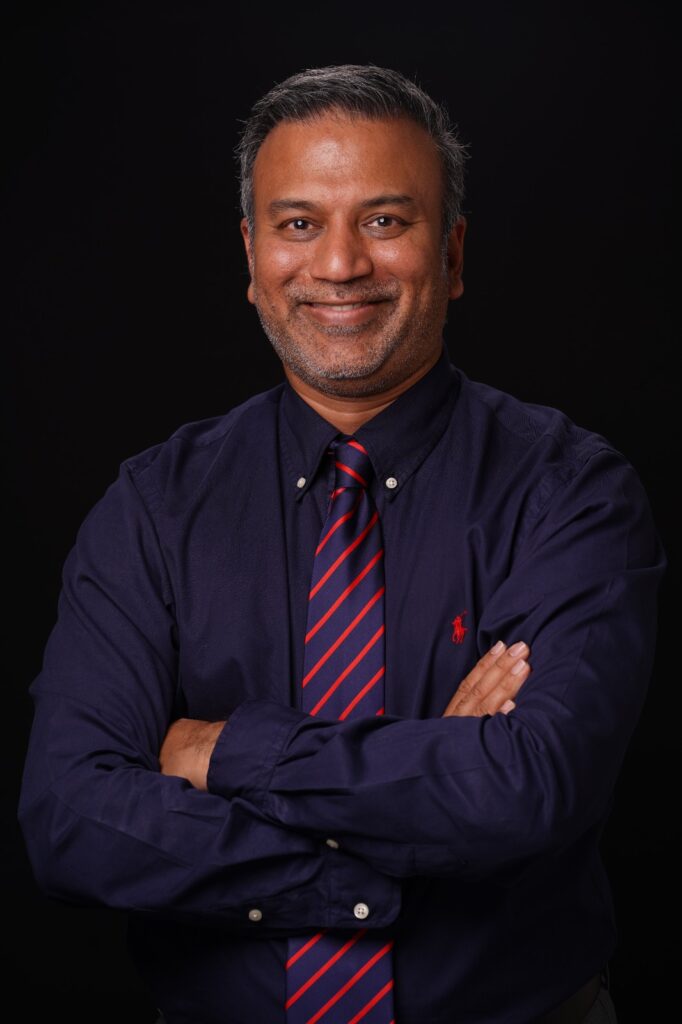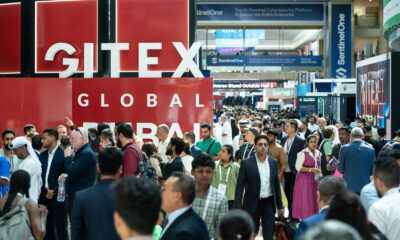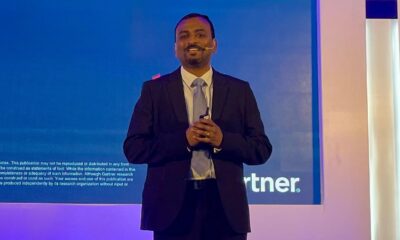Financial
Global Wealth Report 2024: Growth returns to 4.2% offsetting 2022 slump

People around the world are getting progressively wealthier – and that doesn’t just apply to those who already own great wealth. Upward wealth mobility is expected to become more pronounced by 2030 and, further out, signs of a horizontal wealth transfer emerge.
In 2023 wealth growth across the world has recovered from its 3% contraction the previous year. The contraction in 2022 was largely attributable to currency effects, i.e. a strong USD. However, the bounce back of 4.2% offset the loss from 2022, regardless of whether it is expressed in USD or local currencies, and was driven by growth in Europe, the Middle East and Africa (EMEA) at 4.8%, as well as Asia-Pacific (APAC) at 4.4%. Moreover, as inflation slowed, real growth exceeded nominal growth in 2023, resulting in inflation-adjusted global wealth growing by nearly 8.4%.
Although global wealth has been on a steady upwards trajectory since 2008, the pace of growth has lost steam in almost all markets. The latest edition of the Global Wealth Report, now in its fifteenth year, highlights the following regional and demographic themes:
• In 2023, adults in EMEA were the wealthiest on average (USD 166,000), followed by APAC (USD 156,000), and the Americas (USD 146,000), but their average wealth grew at the slowest pace since 2008 at around 41% compared to 122% in APAC and 110% in the Americas in the same timeframe.
• Overall wealth has grown fastest in APAC – by nearly 177% since 2008 – and has been accompanied by significant spike in debt, which has grown by over 192% in the same timeframe.
• Although the Americas have trailed the global wealth rebound in 2023, the United States in particular have bucked the trend of slowing growth over time, increasing their compound annual growth rate from 4% between 2000-2010, to 6% between 2010-2023.
• Negative wealth growth in USD between the start of the second decade and 2023 has only been found in Greece, Japan, Italy, and Spain.
• On an individual market level, Switzerland continues to top the list for average wealth per adult, followed by Luxembourg, Hong Kong SAR and the United States.
• The biggest wealth increases in 2023 occurred in Türkiye, Qatar, and Russia, with Türkiye leaving all others behind at a staggering growth of 157%.
• Presently, the United States, followed by Mainland China and the UK have the highest number of USD millionaires, with the US accounting for 38% of global millionaires. By 2028, according to the report’s forecast, the number of adults with wealth of over USD one million will have risen in 52 of the 56 markets analyzed, and is estimated to grow by 50% in Taiwan.
• While average wealth is significantly higher than median wealth in almost all markets included in the report’s sample, the United Arab Emirates, Germany, Switzerland, Israel, and Mexico, among others, have shown stronger growth in median compared to average wealth since 2008. This indicates that adults in lower wealth brackets have seen their wealth increase faster than those in higher brackets.
• Although inequality has tended to increase over the years in fast-growing markets, it has diminished in several developed mature economies and globally, the number of adults in the lowest wealth bracket is in constant decline, while all others are steadily expanding.
Wealth mobility and the horizontal wealth transfer
According to the report, across every wealth bracket and over any time horizon, it is consistently likelier for people to climb up the wealth ladder than slip down it. In fact, the analysis shows about one in three individuals moves into a higher wealth band within a decade and over a thirty-year timespan the chance of escaping the lowest wealth bracket rises to over 60%.
Finally, roughly USD 83 trillion are expected to be passed on within the next two decades. That is roughly the equivalent of the value of all the economic activity in the global economy in a single year. An under-explored facet of this transfer is that a notable amount of this wealth will move horizontally between spouses first, before moving to the next generation. In practice, this means a considerable transfer of wealth to women, considering their comparatively higher life expectancy. Just over 10%, about USD 9 trillion, of the great wealth transfer are expected to be passed on horizontally first, most of it in the Americas.
Iqbal Khan, Co-President UBS Global Wealth Management, said: “Wealth needs careful stewardship and managing it properly needs time, dedication and passion. As the world’s only truly global wealth manager, we understand the shifts and changes in global and local wealth and translate this into opportunities and outcomes for our clients.”
Robert Karofsky, Co-President UBS Global Wealth Management, adds: “Backed by 30 years of data, the Global Wealth Report crafts a clear picture of how wealth is created, how it’s distributed, how it transforms and how it’s transferred. It gives us deep insights and understanding that we can bring to fruit for our clients.”
Paul Donovan, Chief Economist at UBS Global Wealth Management, notes: “The world economy is embarking on a period of profound structural change. Such episodes often create significant changes in wealth patterns. At the same time, wealth is needed to finance the investment in both technology and people that will allow humanity and the planet to thrive in the brave new world. Knowing where and how wealth is held is essential to mobilizing it effectively.”
Financial
Reimagining Banking: Unlocking Endless Potential and Unlimited Growth in the Middle East

By Keith Redding, Chief Revenue Officer, Universal Banking at Finastra

Reimagining banking in the Middle East is redefining how financial institutions grow, engage, and innovate. As digital transformation accelerates, banks must evolve to deliver seamless, secure, and personalized experiences that meet rising customer expectations.
Across the UAE and Saudi Arabia, adoption of digital banking continues to surge. According to Capco’s “Bank of the Future” survey, 89% of UAE customers have become more confident using mobile banking services, while 83% now access them primarily via mobile apps. Similarly, Saudi Arabia expects online banking penetration to grow by over 16 percentage points between 2024 and 2029, underscoring the region’s momentum toward smarter, connected financial ecosystems.
Reimagining Banking Middle East with Data and Analytics
Data has become the new cornerstone of success. Through AI, analytics, and machine learning, banks can decode customer behaviour and anticipate needs more precisely than ever. As a result, they can personalize offerings, boost retention, and reduce friction across the customer journey.
A clear example of this transformation is Riyad Bank’s Centre of Intelligence (COI) — Saudi Arabia’s first AI-focused banking hub — which enhances operational efficiency while driving innovation in customer engagement.
By reimagining banking in the Middle East with data-driven strategies, institutions can align financial products with real-time insights and deliver experiences that feel intuitive, predictive, and human.
Hyper-Personalization and Omnichannel Growth
Customers today interact through multiple touchpoints — mobile apps, websites, and physical branches — expecting consistent, personalized service. Therefore, delivering a seamless omnichannel experience has become the foundation of loyalty.
In the UAE, 70% of consumers are willing to share personal data for tailored experiences, while in Saudi Arabia, the number climbs to 71%. This readiness empowers banks to use analytics ethically and transparently, transforming everyday banking into relationship-driven engagement.
Digital Sales Outreach and New Engagement Models
Digital outreach is not an option — it’s essential. Mobile-first strategies, social media engagement, and AI-driven marketing are now central to how banks connect with customers.
Take D360 Bank, one of Saudi Arabia’s first digital-only institutions. It attracted over 600,000 customers within two months of launch, proving that mobile-first banking can scale fast when powered by user-centric design.
Ecosystem Collaboration: Powering Innovation in the Middle East
Another major force reimagining banking in the Middle East is ecosystem collaboration. By partnering with fintechs, big tech firms, and infrastructure providers, banks can expand capabilities faster than ever before.
Globally, fintech startups have surged from 12,000 in 2020 to nearly 30,000 in 2024. The Dubai International Financial Centre (DIFC) now hosts over 1,000 fintech firms, while Saudi Arabia’s fintech ecosystem has more than doubled within a year. This growth underscores the importance of collaboration as a driver of agility and innovation.
Such partnerships empower banks to deploy advanced solutions like AI-powered risk scoring, embedded finance, and real-time payments — all while ensuring compliance with regional and global standards.
Looking Ahead: Building a Future-Ready Financial Ecosystem
The future of reimagining banking in the Middle East lies in intelligent, insight-led operations. Automated recommendations, predictive support, and AI-driven decision-making will soon define how banks engage customers.
Forward-thinking institutions in the UAE are already adopting AI-assisted frameworks that streamline service and elevate the customer experience. In Saudi Arabia, agile innovation models like Alinma Bank’s digital factory accelerate product launches and improve customer alignment.
As the region continues to evolve, banks that combine innovation, collaboration, and customer-centric transformation will achieve sustainable growth and long-term market leadership.
Check this out UAE Crypto Regulation Sets Global Blueprint
Financial
UAE Crypto Regulation Sets Global Blueprint

By Karl Naïm, Group Chief Commercial Officer, XBTO
The UAE has evolved from a crypto sandbox to a global model for digital asset regulation, demonstrating how policy clarity, investor protection, and innovation can coexist. Once a regional testing ground, the nation now leads in tokenization, blockchain adoption, and institutional-grade compliance — setting a framework others are eager to emulate.
Institutions Move from Observation to Adoption
Over the last two years, institutional investors — from sovereign funds to global asset managers — have shifted from cautious exploration to structured allocations in digital assets. Yet, these investors only engage when they see robust regulatory infrastructure.
Here, UAE crypto regulation stands apart. While the U.S. remains divided over jurisdictional control and Europe’s MiCA awaits full rollout, the UAE offers a complete ecosystem where policy meets execution. This maturity has transformed the country into a trusted base for large-scale blockchain initiatives.
Two Regulatory Paths, One Unified Objective
The UAE’s approach balances innovation and oversight through two distinct yet aligned regulatory arms.
- Abu Dhabi Global Market (ADGM): Through the Financial Services Regulatory Authority (FSRA), it licenses custody, tokenization, and brokerage activities under strict governance criteria.
- Dubai’s Virtual Assets Regulatory Authority (VARA): Instead of classifying asset types, VARA regulates activities, giving firms flexibility to innovate without restarting their licensing process.
This dual model ensures both stability and adaptability — a rare equilibrium that reinforces confidence among enterprises and investors.
Tokenization Moves from Pilot to Production
In 2023, Neovision and Realize launched one of the first tokenized U.S. Treasury funds under ADGM’s oversight, now part of a market valued at over $2.4 billion. Soon after, HSBC piloted tokenized gold settlement in the Emirates, leveraging the UAE’s mature legal and technical infrastructure.
Unlike most markets, where tokenization remains conceptual, the UAE has operationalized it across corporate bonds, commodities, and private equity. This tangible progress makes UAE crypto regulation a benchmark for turning blockchain theory into enterprise-scale reality.
Proven Resilience Through Market Turbulence
The UAE’s frameworks were tested during the 2022 digital asset downturn. While some regions froze licensing or enforcement, VARA introduced stricter custodial and marketing rules while continuing to issue licenses transparently.
In 2024, both VARA and ADGM demonstrated accountability by penalizing unlicensed operators and enforcing compliance — signaling a regulatory environment that values both innovation and discipline.
Blockchain Beyond Finance
Beyond crypto trading and tokenization, the UAE is using blockchain to drive cross-sector innovation.
- Ras Al Khaimah has built a dedicated Web3 zone for decentralized applications.
- Sharjah is piloting blockchain in public services, from identity to supply chain tracking.
This diversification proves the national model’s flexibility and depth, blending economic and civic value under a unified UAE crypto regulation framework.
Geography Meets Governance
Situated between Asia and Europe, the UAE benefits from time-zone overlap, U.S. dollar settlement, and investor-friendly tax structures. Yet its real advantage lies in policy precision. Since 2023, VARA has issued frequent updates and consultative papers, responding dynamically to industry input.
Following its removal from the FATF grey list in 2024, the UAE has accelerated compliance reforms faster than most peers, turning global scrutiny into strategic progress.
A Replicable Blueprint for the World
While the U.S. debates regulatory ownership and Europe await MiCA’s maturity, the UAE has implemented a live, multi-emirate framework. It balances openness with oversight — a model now studied by global policymakers.
For institutional investors, the question has shifted from if to were. Increasingly, the answer is clear: the UAE — where crypto regulation is no longer an experiment, but the emerging global standard.
Read our previous post, UAE Depreciation Rules Boost Real Estate Investment
Financial
UAE Depreciation Rules Boost Real Estate Investment

By Shabbir Moonim, CFO, The Continental Group

A Sharper Edge for UAE Property Depreciation Investors
The UAE property depreciation is reshaping how businesses and family offices view property as an investment. Real estate has always anchored wealth and stability, but its treatment within corporate tax frameworks now determines how effectively it performs over time.
The latest guidance allows depreciation deductions on properties valued at fair market value, adding a layer of fiscal precision. Companies choosing the realization basis—deferring tax until sale—can now claim an annual deduction of up to 4 percent on the property’s original cost or written-down tax value. This refinement strengthens property’s role inside long-term, tax-efficient portfolios.
How Depreciation Boosts UAE Property Cash Flow
Investment success depends not only on appreciation but also on liquidity and reinvestment power. Depreciation lowers taxable income, improving post-tax returns for assets that are typically illiquid.
For structured property holders, claiming depreciation under fair-value accounting boosts internal yield and aligns property with other income-producing assets. Even at a modest 4 percent, the deduction releases capital that can be reallocated or retained, enhancing overall portfolio efficiency.
Moreover, this recurring offset stabilizes cash flows, giving investors predictable returns that complement the long-term nature of property ownership.
Aligning UAE Property Depreciation with Tax Efficiency
Previously, owners had to choose between fair-value accounting and depreciation benefits. Businesses valuing properties at market rates lost tax deductions, while those using historical cost models retained them. The new UAE depreciation rules remove this compromise.
Now, companies can maintain up-to-date valuations and still claim depreciation, ensuring transparency and consistency. This alignment allows property to compete directly with other investment classes, from private equity to listed securities, on a balanced tax basis.
Consequently, financial planners can make clearer, data-driven decisions about capital allocation and portfolio composition.
Small Rule, Big Impact on UAE Property Investment
While no single regulation redefines real-estate logic, subtle fiscal changes can transform investment behavior. This policy turns property from a passive holding into an active component of strategic capital management.
It also reflects the UAE’s commitment to predictable, rules-based governance that supports investment without distorting markets. For business owners and families planning across generations, this stability builds confidence and encourages long-term commitment to the country’s economy.
Ultimately, the UAE depreciation rules help transform real estate from a static asset into a dynamic tool for tax optimization and sustainable growth.
A Foundation for Smarter Real Estate Portfolios
These reforms make it easier to incorporate real estate within diversified investment portfolios. They support businesses in balancing cash flow needs, compliance requirements, and performance targets.
For investors, the message is clear: property can now compete with other asset classes not only on returns but also on efficiency and resilience. The UAE continues to build a financial landscape where predictability and innovation work hand in hand.
About the Author
Shabbir Moonim is the Chief Financial Officer at The Continental Group, with over 25 years of experience in finance, strategy, and governance. He aligns financial operations with enterprise growth, oversees risk management and treasury, and drives regulatory readiness and data-driven decision-making across the organization.
About The Continental Group
Founded in 1994 by Ashok Sardana, The Continental Group is a leading insurance and financial services provider licensed by the UAE Insurance Authority, SCA, and DFSA. With over 250 professionals operating across Europe, the Middle East, and Asia, the Group offers customized solutions in investments, wealth management, succession planning, and insurance. Its core values — integrity, insight, and innovation — continue to drive client trust and long-term financial well-being.
Check out our previous post, ADIB Launches Remit Service, Expands Digital Banking Solutions
-

 Tech News1 year ago
Tech News1 year agoDenodo Bolsters Executive Team by Hiring Christophe Culine as its Chief Revenue Officer
-

 VAR6 months ago
VAR6 months agoMicrosoft Launches New Surface Copilot+ PCs for Business
-

 Tech Interviews2 years ago
Tech Interviews2 years agoNavigating the Cybersecurity Landscape in Hybrid Work Environments
-

 Tech News3 months ago
Tech News3 months agoNothing Launches flagship Nothing Phone (3) and Headphone (1) in theme with the Iconic Museum of the Future in Dubai
-

 Tech News2 years ago
Tech News2 years agoBrighton College Abu Dhabi and Brighton College Al Ain Donate 954 IT Devices in Support of ‘Donate Your Own Device’ Campaign
-

 Editorial11 months ago
Editorial11 months agoCelebrating UAE National Day: A Legacy of Leadership and Technological Innovation
-

 VAR1 year ago
VAR1 year agoSamsung Galaxy Z Fold6 vs Google Pixel 9 Pro Fold: Clash Of The Folding Phenoms
-

 Cover Story7 months ago
Cover Story7 months agoUnifonic Leading the Future of AI-Driven Customer Engagement
























